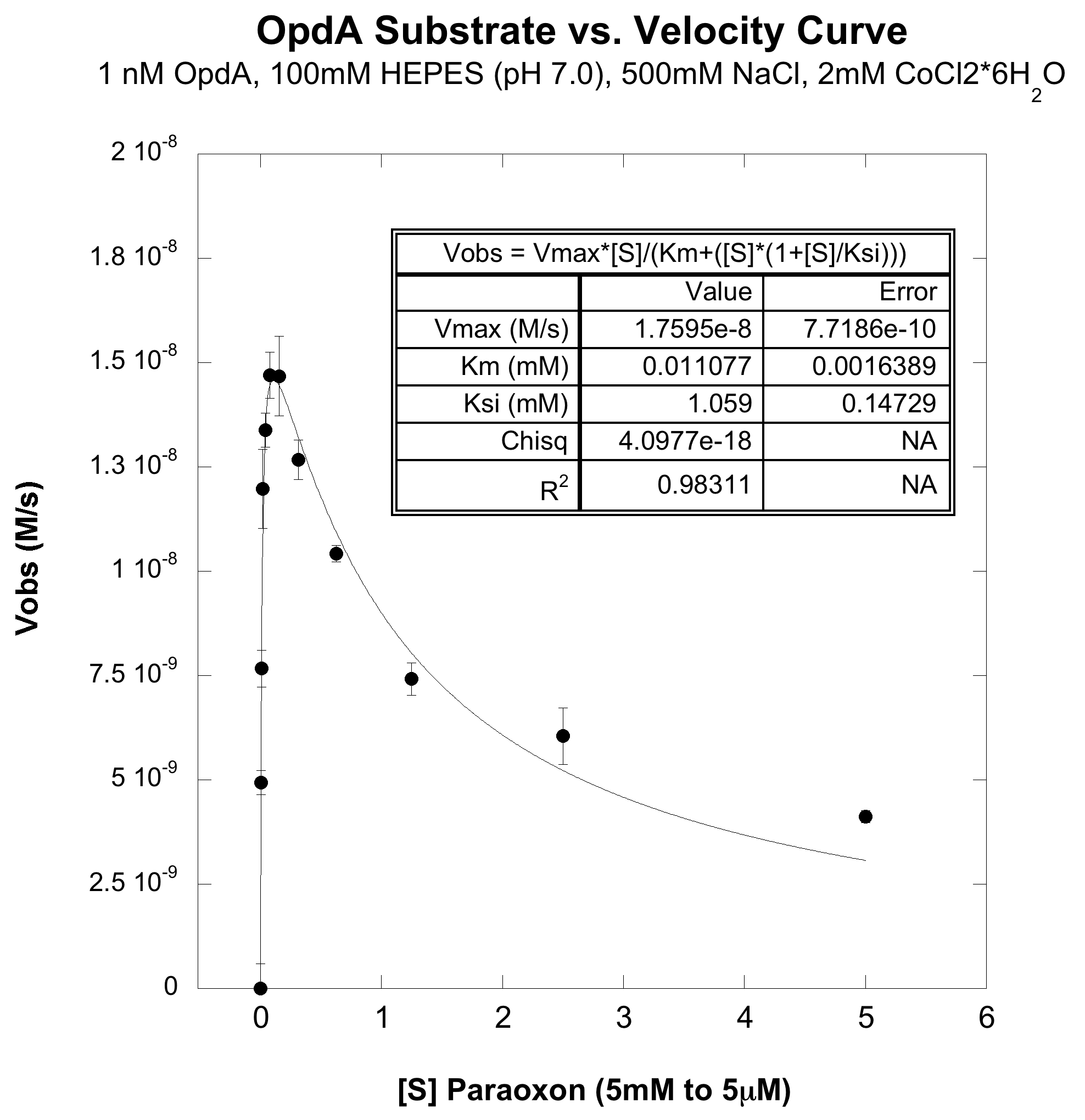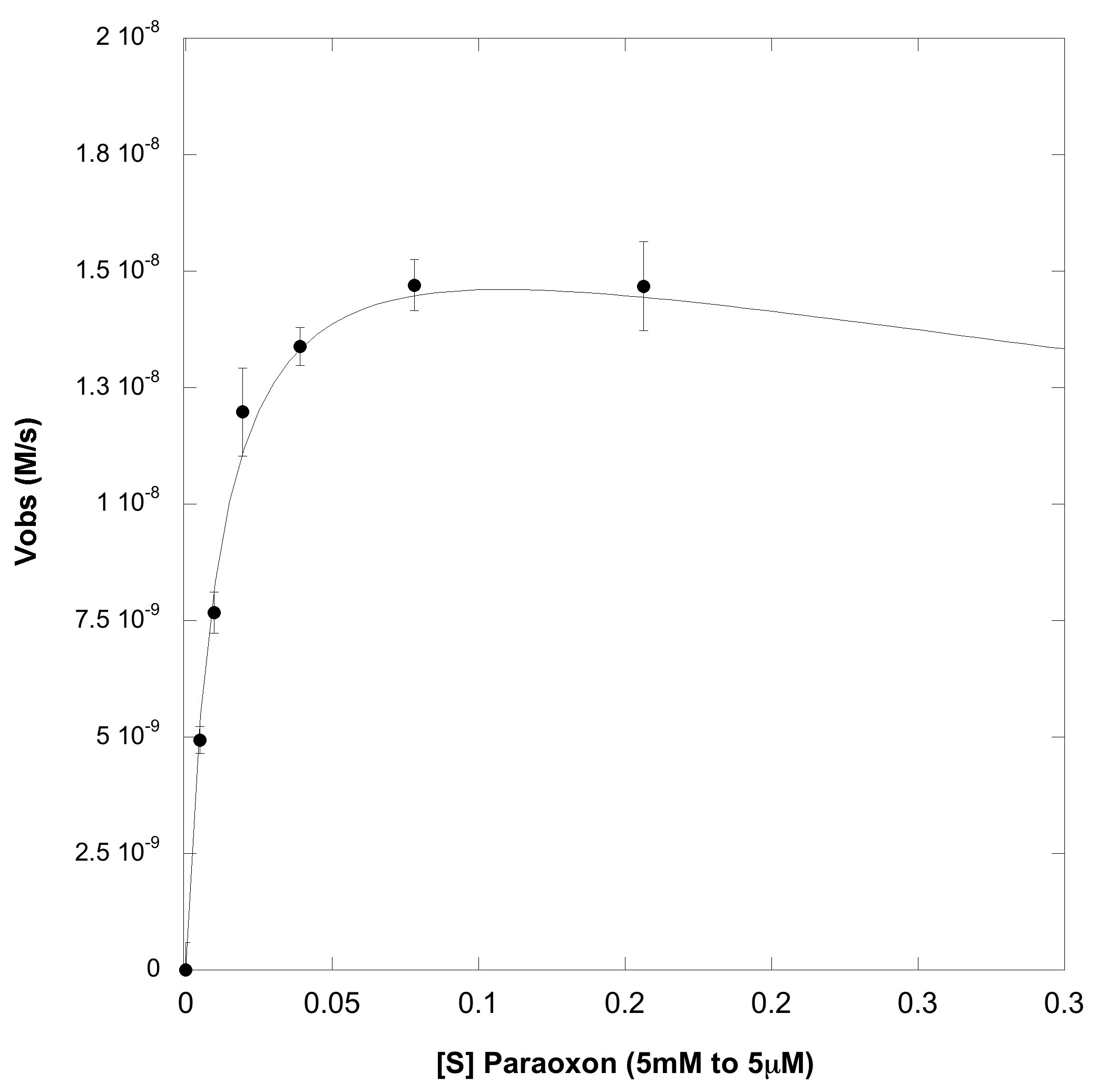Team:Washington/Project/Opda
From 2009.igem.org
(→Experiments) |
(→Experiments) |
||
| Line 21: | Line 21: | ||
[[image:OpdA_full.png |500px | center]] | [[image:OpdA_full.png |500px | center]] | ||
| - | + | From the above plot, it obvious that this enzyme does not exhibit the usual Michaelis-Menten dynamics. It can be seen that at high enough concentrations, the enzyme actually undergoes substrate-inhibition, wherein the extra substrate actually slows the enzyme's velocity. | |
| + | |||
| + | The plot below is zoomed in on the lower substrate concentration, where OpdA is not substrate inhibited. | ||
[[image:OpdA_zoom.png |500px | center]] | [[image:OpdA_zoom.png |500px | center]] | ||
| + | |||
| + | |||
| + | Need citations and speak on literature!!! | ||
Revision as of 07:20, 13 October 2009
| Target Vector | Secretion System | Display System |
|---|
OpdA
Background
OpdA (BBa_K215090) is an organophosphate-degrading enzyme from Agrobacterium radiobacter. It is capable of degrading a wide range of organophosphates, most notably pesticides that are poisonous to humans, such as paraoxon. We chose to biobrick and submit this enzyme to the registry for a number of reasons. First and foremost, this enzyme is easy to assay for since it can hydrolyze substrates very quickly (e.g. paraoxon) and form a bright yellow product. This yellow product would make it easy to see that the OpdA was present and functioning in our system. And secondly, Opda is a very useful enzyme that could have applications in future iGEM and other synthetic biology projects, so its presence in the Standard Registry of Biological Parts is beneficial.
Experiments
To fully characterize this part, we expressed and purified the OpdA biobrick using traditional techniques. We then used this purified OpdA to generate the kinetic data shown below on the substrate paraoxon.
From the above plot, it obvious that this enzyme does not exhibit the usual Michaelis-Menten dynamics. It can be seen that at high enough concentrations, the enzyme actually undergoes substrate-inhibition, wherein the extra substrate actually slows the enzyme's velocity.
The plot below is zoomed in on the lower substrate concentration, where OpdA is not substrate inhibited.
 "
"



